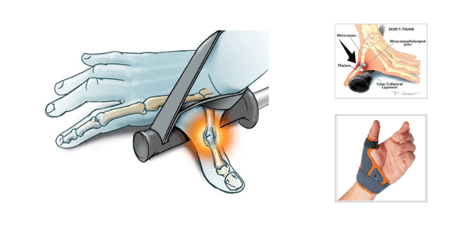Wrist instability is a common yet complex issue often addressed by hand therapists. The intricate structure of the wrist consists of eight carpal bones, stabilized by an intricate network of intercarpal ligaments. This structure allows for the fluid range of motion known as circumduction, while providing stability at every angle. However, injuries to these ligaments can disrupt the harmony of the wrist, leading to instability. Here, we’ll explore the most commonly injured ligament, how to assess for wrist instability and treatment options.
Injury to the Scapholunate Ligament
The scapholunate (SL) ligament, which plays a crucial role in maintaining the stability of the wrist by providing support between the scaphoid and lunate bones, is frequently subjected to injury. This ligament is essential for the proper alignment and function of the wrist, and its injury can lead to a variety of instability patterns and causes. The SL ligament is the most commonly injured among the wrist ligaments, and damage to this area can manifest in several forms. It can range from a slight tearing or attenuation, where the ligament is stretched or partially torn, to a complete rupture or disruption. Such severe injuries can lead to significant complications, including the progression to arthritic changes in the joint, which can severely impact the wrist's functionality over time.
Injuries to the SL ligament often become apparent when they begin to interfere with a person's ability to perform daily activities and work-related tasks. This is because the ligament's integrity is vital for the wrist's stability and function, and any compromise can lead to pain, weakness, and a decreased range of motion. These symptoms can significantly hinder an individual's ability to carry out tasks that require wrist strength and dexterity, such as lifting, typing, or any activity that involves gripping or twisting motions. As a result, injuries to the SL ligament are not only a medical concern but also a functional one, as they can adversely affect a person's quality of life and occupational performance.
Assessing Patients
Evaluating a “sprained wrist” requires thorough assessment, especially when signs of SL ligament injury are present. Symptoms that warrant further investigation include:
- Persistent wrist pain and swelling
- Reduced or painful grip strength
- Unstable or grinding sensations in the wrist
- A clicking or pain-triggering noise during wrist movement
The presence of any combination of these symptoms should alert the HCP to look beyond the “it’s only sprained” presentation.
Treatment of SL Injuries
Treatment of SL injuries depends on the amount of interruption of the ligament, but typically focuses on protection via immobilization with attention to regaining functional strength and motion once healing permits. For partial tears or minor injuries, non-surgical interventions are often sufficient.
These typically include:
- Immobilization via Splinting: Stabilizing the wrist through an immobilizing splint helps mitigate ligament strain and promotes healing.
- Client Education: Empowering patients with knowledge of safe motions and rehabilitation protocols can enhance recovery.
- Isometric Strengthening Exercises: Gradual and low-impact exercises to rebuild strength and improve wrist function.
If surgery is required, cast or splint immobilization with progression to gentle exercises is a recommended rehabilitation protocol.
Splint Immobilization
Splint immobilization remains a staple for the treatment of SL ligament injuries. There were a series of biomechanical studies that proposed early active motion with injuries to this particular ligament in the pattern of dart throwers motion. The findings in these studies suggested that this pattern of motion did not cause stress to the SL ligament. These studies were all performed on individuals with healthy wrists, making the suggested motion protocol suspect.
A more recent biomechanical study that included both healthy wrists and wrists with attenuation to the SL found an increase in motion at the scaphoid and the lunate when there was instability at the SL interval via a tear at the SL ligament. Immobilization to allow healing remains the most appropriate treatment for SL ligament injuries.
Either custom fabricated or custom fit wrist orthoses are an appropriate treatment choice. Prefabricated wrist orthoses available include the Fix Comfort Wrist Brace for moderate support.
For post-operative or return to work splinting, the 3pp Wrist Wrap NP offer support while allowing functional wrist range of motion.

Blog References: For more information on this topic, click to see the references for this blog post.





